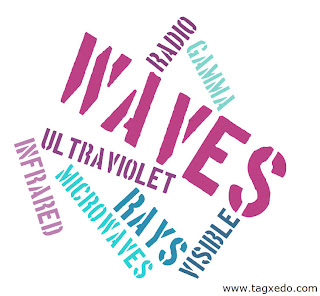An electric circuit is the path through which electric current flows from a generator to a load. In electricity, we studied three different types of circuits, parallel, series, and series-parallel combination circuits. We used lightbulbs to demonstrate the flow of electricity through the circuits. A DC circuit is a direct current circuit which means it is a circuit that is connected to a source of power, like a battery. In the picture below is an example of a series circuit.
In this picture you can see the two lightbulbs connected in series. The lightbulbs are resistors. A series circuit is a circuit where all of the resistors are connected directly to the battery and because of Kirchhoff's first law. The current is the same throughout the entire circuit because the resistors are connected to each other and only create one path for the current to travel. It is in a circle in which the current is constantly flowing and there are no "forks in the road" or places for the current to split. The total voltage is the sum of both of the resistors' voltages. The voltage is the energy of the circuit and is distributed to the light bulbs. The voltage of each light bulb is the current (which is constant in series) times the resistance of the resistors. The total voltage of the circuit is equal to the sum of the voltages in the entire circuit. When one of the bulbs is removed, all of the lights go out because the path of the current is interrupted and the current cannot reach the other bulb.
The picture above is of a parallel circuit. Parallel circuits are circuits where each resistor has a different path by which the current can flow. The current of a parallel circuit is not constant because there is more than one parth by which the current can flow so it splits and goes to the different resistors/bulbs. The sum of the currents of each resistor is equal to the total current. The voltage of the parallel circuits is a constant value in the whole circuit. The voltage of each light bulb does not affect the voltage of the battery because equal to the battery since it is not on the same path as the battery's voltage. When a bulb is removed from this circuit, the other bulb remains lit because there is still a complete path for the current to travel.
The image above is of a series-parallel combination circuit. This circuit consists of a set of parallel resistors and the parallel set is connected in series to another resistor. In this circuit, the current is determined by finding the total resistance of the parallel section and adding that to the resistance of the resistor in series with the parallel bit. Once you get the total resistance you can find the total current. The total current changes due to the resistance. The voltage of the combination circuit is also a combination of the parallel and series. The voltage of the parallel part is equal (explanation above) and the voltage of the part in series can be found using the series explanations. The reason the bulb in series is brighter is because the total current is running through this portion unlike in the parallel portion where the current is split. When a bulb is removed from the parallel portion, the rest of the bulbs will stay lit because there is still a complete path and the current doesn’t need to go through the section of the removed bulb. When the bulb in series is removed, the entire circuit goes out because the path of the current is interrupted and there is basically a hole in the circuit so the current cannot travel.
In all three types of circuits, the current and voltage act and are distributed differently depending on the path of the wires and how the resistors are connected.




